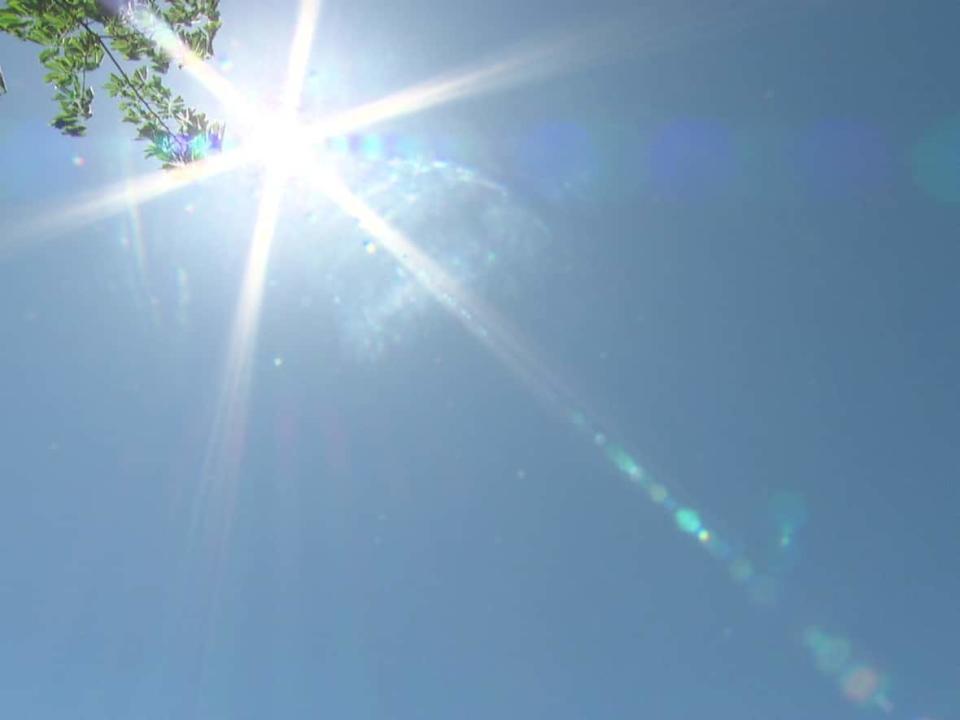Climate change intensifying, not triggering, northern heat wave: climatologist

Some N.W.T. communities are under a heat warning this week with temperatures anticipated to hit 30 C in some Arctic regions.
Environment and Climate Change Canada (ECCC) issued the warning for Aklavik, Inuvik, Fort Good Hope, Norman Wells, Tulita, Fort McPherson, Tsiigehtchic and surrounding areas.
Though Natalie Hasell — a warning preparedness meteorologist with ECCC — said it's more common for heat waves to occur in southern N.W.T. communities, it's not unheard of to have higher temperatures in the Arctic.
A 38 C reading in Siberia in 2020 raised concerns over extreme weather and human induced warming climate.
In the Northwest Territories, a "heat warning program" has only existed since 2017.
In 2017 no heat warnings were issued in the territory.
In 2018 Hasell said there were "some" heat warnings.
In 2019 there were warnings issued for communities in the South Slave and parts of the Dehcho region from July 17-25, however in 2020 heat warnings stretched as far north as Sachs Harbour, Ulukhaktok, Paulatuk, Tuktoyaktuk, Aklavik and Inuvik, in addition to Tłı̨chǫ and South Slave region communities.
In 2021, Hasell said the heat dome, originating in B.C., impacted the entire country and all the communities of the territory.
Hasell said the data indicates there is precedent for raised temperatures in the territory's northern communities, and said she suspects climate change is a "significant" factor.
Hasell further pointed to last year's heat dome and said that has been attributed to climate change and human activity, though she acknowledged that natural changes are also a factor.
"We also know that areas in the North are affected by climate change much more than other parts of the country," she said. "So, perhaps climate change is playing a greater role and we're seeing that in these warmer temperatures."
Heat dome over region
Dave Phillips is a senior climatologist with ECCC.
He said what's important is the duration of the heat warnings.
"One day events happen all the time, but to get them for a pattern that sets up and locks in and doesn't move, then that is troublesome," Phillips said.
He pointed to Norman Wells as an example saying the Sahtu community could see seven days in a row "if not longer" of temperatures above 30 C.
"I don't think there's been a place in Canada this summer that can say they've had more than five days above 30 degrees."
To trigger a heat warning, Phillips said there must be two consecutive days above 28 degrees and 13 degrees at night.
Phillips said the current northern heat wave is the same weather feature as last year's historic heat dome, which "created some of the most destructive and deadliest weather in Canadian history."
"That dome is now north of the Arctic Circle and it's sitting right over ... Inuvik and Aklavik and Norman Wells," he said, adding that the dome sits over parts of the Yukon as well.
Phillips said that although the warm temperatures are not caused by global warming, human activity does intensify the extreme weather.
"Weather comes from so many different triggers and factors and sources, and to say that was caused by climate change is the wrong response," Phillips said. "Did it make it worse? It did."
Keeping cool
In Inuvik Monday temperatures hit 31 C. To keep cool, residents took to the lake, drank cold beverages and stayed near fans when possible.
One resident, Marshall Brown, said he's "been in the most vegetative state possible."

Brown said there's no air conditioners available to purchase anywhere in town, so he's trying "to relax as much as possible."
The N.W.T. Department of Health and Social Services suggests wearing loose fitting clothing, staying hydrated, closing curtains to avoid the sun, taking cool showers and visiting air conditioned buildings when possible.
The department reminds residents not to leave children or pets in parked cars, and to check in often on young children, pregnant women, the elderly and those with chronic illness who are at higher risk of adverse health impacts.
Hasell and Phillips both warned that air quality was worse in some areas because of nearby wildfires.
"A combination of smoke and heat is particularly stressful," Hasell said, adding that the combination makes it even more important for groups at risk to take precautions.
Symptoms of severe heat illness include dizziness, nausea, headaches, extreme thirst and decreased urination. Anyone feeling unwell due to the extreme heat should seek medical attention.

